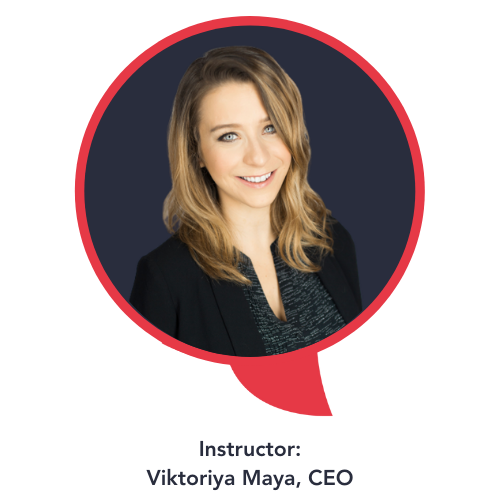Brand loyalty is one of the most sought-after customer traits companies pursue through a customer life cycle. Customer loyalty ensures return clients. It also increases profit without the extra expense of winning new clients.

There is, however, a process involved in turning customer interest into customer loyalty. In this article, we will look at what this process entails and how to maximize each stage to benefit both the client and the company.
What is the Customer Life Cycle?
The customer life cycle consists of 5 stages that customers progress, starting from the initial interaction with a company to becoming a loyal customer.
The progression of the customer life cycle can move back and forth between stages and is not always a guaranteed linear process.
The 5 stages of a customer life cycle are:
- Awareness
- Acquisition
- Conversion
- Retention
- Loyalty
Achieving the end goal in the customer life cycle can be a lengthy journey. Consider a purchase such as a new vehicle. When customers buy a car, they will likely choose a brand that they are familiar with and that has served them well in the past.
An expensive purchase such as a vehicle only happens once every few years. Establishing an excellent experience at the beginning of the customer life cycle can gain you a customer for life. In the same way, if a customer is very disappointed in your product or service, you can lose a customer for life as well. Therefore, every step of the customer life cycle requires nurturing and equal effort.

Improve your listening skills and transform the way you communicate with customers!
The 5 Stages of the Customer Life Cycle Explained
Stage 1: Awareness
The first stage of the customer life cycle can also be considered as a stage of discovery. Product discovery can happen through advertising, social media, online search engines, and word of mouth. All customers start at this phase. This makes it essential that the company’s first impressions are impactful and positive. Creating awareness is an expensive stage of the customer life cycle as it involves marketing and promotional costs.
Stage 2: Consideration
The second stage of the customer life cycle requires engagement with the customer on a personal level. This stage involves educating the customer by answering questions and clearly stating why your brand is the best choice. During this stage, your customer is weighing up the pros and cons of choosing your brand over a competitor. Adopting a customer obsession mindset will help you and the team achieve great results!
Stage 3: Conversion
During this stage, your prospect makes a purchase and becomes an active customer. The increased popularity of e-commerce business poses new challenges in the conversion stage.

Customers can abandon online shopping carts before completing their purchase. Digital purchase processes that are too lengthy or complicated will result in a prospect leaving the site before the purchase is finalized.
Stage 4: Retention
The customer retention stage consists of post-purchase engagement with the customer. Here it is important to show the customer that their satisfaction matters. By following up with the customer you will deepen the business relationship making it more likely for them to buy from you again.
Stage 5: Loyalty
If a customer has had an excellent experience with your product or service you will likely gain a loyal follower. The customer will not only buy from you again, but will become an advocate for your brand. These customers will leave good reviews, tell their friends, and recommend your business to others.

How to Maximize Each Stage of the Customer Life Cycle for Business Growth
Maximizing Awareness
To effectively reach out to potential customers and stand out above other brands, create a business marketing plan. This will allow you to strategize budget use in the most effective way. Define your target audience so that you can determine the best methods to reach them.
Maximizing Consideration
During this stage the consumer is contemplating how well your product or service can meet their needs. Here it is important to make finding answers effortless. Prospective customers will look for the information they require either in-store, on your website, social media, online reviews, or by contacting you directly.
Maximize the effectiveness of this stage by:
- Making your website user-friendly, easy to navigate, and informative without applying sales pressure
- Making it easy for the customer to leave their details or to get hold of you in a way that suits them. This can be via email, telephone, online chat, or social media
- Personalizing customer communication by using their name on quotes or emails
- Tailoring newsletter content to customer interests
- Providing information on your website that is relevant in assisting customers in making decisions
- Including testimonials on your website
Maximizing Conversion
To increase the chance of a successful purchase completion, implement the following strategies:
- Evaluate the purchase workflow and track how many customers abandon a sale before it is complete. Use this insight to find and fix the areas where prospects are getting stuck.
- Respond with a thank-you email after the transaction has been completed.
- Add functionality to your website such as instant chat assistance.
- Follow up with customers who started the purchase process but did not complete the transaction. Offer assistance.
Many of these tactics can be set up automatically for your business allowing immediate and relevant response time.
Maximizing Retention
During this stage, you are communicating with consumers who have already made a purchase. It is important to have a customer management system in place that saves all your customer information and records. Your cost will be lower and conversion rates higher than in the previous stages of the customer life cycle.

Post-purchase engagement can take place in the following ways:
- Post-purchase follow-ups
- Sending promotions to customers via email
- Recommend related products and services that customers might be interested in
- Keep customers connected with your business through events, updates, product launches, and social media
Maximizing Loyalty
Maximizing this stage is an important way to expand your customer base with little extra cost and to make extra sales.
You can do this by:
- Creating a loyalty program that rewards customers for using your service.
- Implementing a referral program that rewards consumers for bringing in new business.
- Launching a members-only service or tiered customer status for loyal customers. This makes them feel that they are in a special client category with exclusive status and unique benefits. An example would be offering a gold or platinum status or card facility.
Quick Summary
The customer life cycle consists of 5 stages that customers progress through when making purchases with a company. Customers may drift back and forth between stages before becoming loyal brand advocates.
The 5 stages of a customer life cycle are:
- Awareness
- Consideration
- Conversion
- Retention
- Loyalty
Once the customer life cycle strategy for your specific industry has been implemented, continue to re-evaluate its effectiveness. Consistent improvement and adjustments are necessary to ensure you are always guiding clients gently to become loyal advocates for your business.
Other Resources:
CustomersFirst Academy offers comprehensive customer service training designed to help you grow your skills and advance your career.
To keep learning and developing your knowledge of customer service, we highly recommend the additional resources below:
Improve Group Communication Using Email
Best Service Company: Stories and Lessons
Business Strategy Guide to Customer Intimacy
Customer Satisfaction Metrics to Track in 2021

